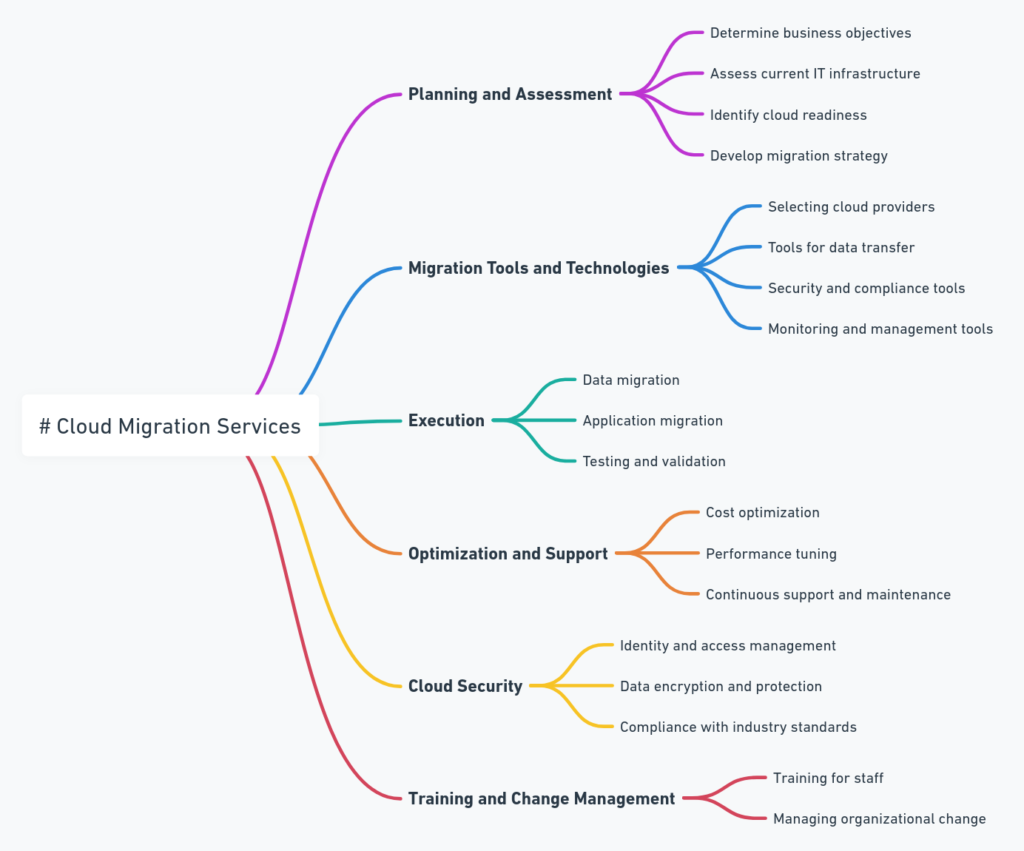Moving to cloud computing is crucial for modernizing IT infrastructure, enhancing efficiency, and potentially reducing costs. Understanding the various strategies and services involved in cloud migration is key to navigating this complex process. Here’s a concise overview, now with more transition words to improve the flow and readability.

Types of Cloud Migration
- Lift and Shift (Rehosting): Initially, this method involves directly moving applications and data to the cloud. It’s swift, yet it might not fully utilize cloud advantages.
- Refactoring/Repackaging: Next, applications are adjusted to align better with cloud infrastructure. This step aims to boost scalability and cost-efficiency.
- Replatforming: Then, minor modifications are made to leverage specific cloud features, like adopting cloud databases, without extensive changes.
- Repurchasing (Replacing): Alternatively, organizations might opt for cloud-native products. This often means moving from traditional software to a SaaS model.
- Retire or Retain: Finally, it’s crucial to decide whether to decommission or keep certain IT assets, based on their necessity or compliance requirements.
Essential Cloud Migration Services
- Assessment and Planning: The process begins with a thorough review of the existing IT environment. This phase includes developing a migration plan that carefully considers costs and risks.
- Migration Execution: Subsequently, the actual transfer of data and applications to the cloud takes place, frequently utilizing automated tools and services.
- Security and Compliance: Moreover, it’s essential to ensure compliance with relevant regulations. Implementing robust security measures in the cloud is a critical step.
- Optimization and Modernization: Lastly, the focus shifts to optimizing the use of cloud resources. This includes cost management and further application modernization to fully embrace cloud capabilities.
Cloud migration is a customized journey, differing significantly across organizations based on their unique needs and objectives. By incorporating more transition words, this summary aims to enhance understanding of the migration process, guiding organizations towards informed decisions and a smooth transition to cloud computing.